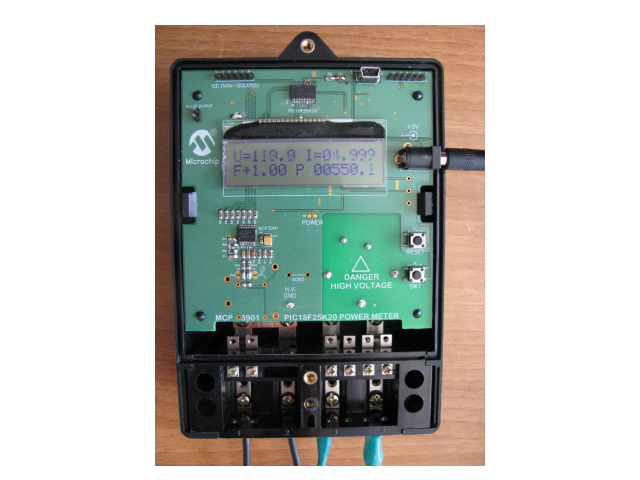Electric meter technology plays a vital role in modern society, and the electric meter reference design combining MCP3901 and PIC18F65J90 brings innovative solutions to the electric meter field. Microchip - Brand Agent - TOPCHIP ELECTRONICS will introduce the key components of this design and provide a user guide so that engineers and developers can better understand and apply this advanced meter design.

MCP3901 and PIC18F65J90: All-in-one meter solution
1.MCP3901 data collector:
The MCP3901 is a high-precision 24-bit ΔΣADC (analog-to-digital converter) designed for energy meter and power monitoring applications. Its high resolution, low noise and low power consumption make it ideal for electric meter designs. MCP3901 can collect voltage and current signals with extremely high accuracy, providing a reliable data basis for electric meters.
2.PIC18F65J90 microcontroller:
PIC18F65J90 is a high-performance 8-bit microcontroller using the powerful PIC18 core. Its rich peripherals and flexible configuration make it very suitable for electric meter applications. PIC18F65J90 integrates multiple analog and digital function modules and can easily communicate with external devices such as MCP3901 to achieve comprehensive electric meter functions.
Electricity Meter Reference Design User Guide
1.Hardware connection:
Before getting started with the MCP3901 and PIC18F65J90 Electricity Meter Reference Design, first make sure you connect the hardware correctly. Check the connections on the circuit board, including sensors, power supplies, communication interfaces, etc. Ensure the reliability of the connection so as not to affect the normal operation of the meter.
2. Drivers and library files:
Download and install the appropriate driver and library files for the PIC18F65J90 microcontroller. These files are usually provided by the chip manufacturer and contain the key functions required for communication with the MCP3901. Make sure you reference these library files correctly in your project to get the most out of your hardware.
3. Data calibration:
Calibration is performed using data collected by the MCP3901 to ensure that the meter provides accurate measurements. During the calibration process, pay attention to factors such as temperature and drift to ensure the reliability of the meter under different working conditions.
4. Communication interface configuration:
Configure the communication interface of PIC18F65J90 to ensure that it can effectively exchange data with external systems. Select the appropriate communication protocol such as UART, SPI or I2C based on specific application needs.
5. Data processing and display:
Utilize the processing capabilities of PIC18F65J90 to design appropriate algorithms to process the collected data. This may involve power calculations, data filtering, peak detection, etc. Choose the appropriate display method, such as LED, LCD or output to other systems through communication interfaces.
6. Security and stability:
Ensure that the meter design has the necessary safety and stability. Take appropriate protective measures to prevent potential electromagnetic interference, overvoltage, overcurrent and other problems. Through proper design and testing, the reliability of the meter in long-term operation is guaranteed.
The MCP3901 and PIC18F65J90 electric meter reference designs bring advanced solutions to the electric meter industry. Through high-precision data acquisition and powerful microcontroller processing capabilities, they provide users with a reliable, efficient and safe electric meter design foundation. When using this design, users need to carefully follow key steps such as hardware connection, driver and library file configuration, data calibration, communication interface configuration, etc. to ensure that the meter system can reach its maximum potential and meet various application needs.
If you need MCP3901 and PIC18F65J90 electric meter reference design user guide manual, sample testing, procurement, BOM distribution, etc., please contact us via the following email:

